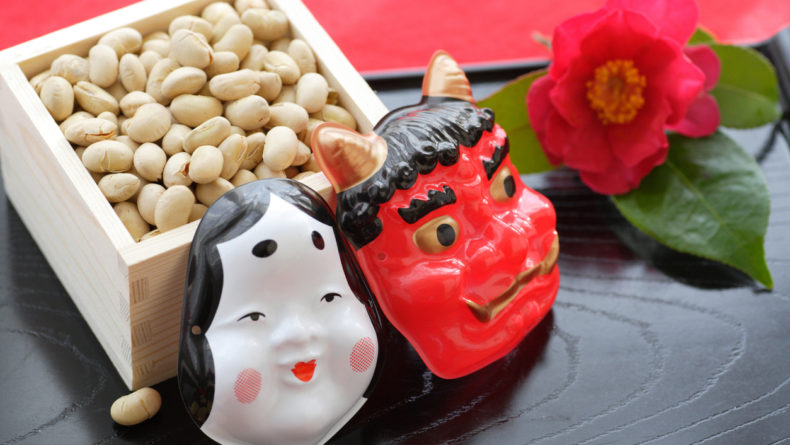So What Exactly Is The Marie Kondo Method?
A Look Into 'Danshari', The Philosophy Of Decluttering
Tidy rooms, tidy minds.
Unless you’ve been living under a rock or a pile of disorganized home clutter, chances are you’ve seen or heard of Marie Kondo, the Japanese tidying guru has taken the world by storm. Her Netflix program came out earlier this year, and she’s already one of the best memes of 2019. If you haven’t watched the show yet, you’re probably left wondering: what’s the big fuss about this impossibly tidy, pocket-sized cleaning Zen master? And what is her secret?
Well, there’s a lot more to Kondo than just organized cutler drawers and book culling. Scratch the sparkling clean surface, and you’ll learn Kondo is as much a Buddhist philosophy teacher as she is a mess-slayer. It’s time to dive into the ancient Japanese ideologies of danshari (断捨離).
View this post on Instagram
Who is Marie Kondo?
Kondo’s passion for organization goes all the way back to when she was a child. According to an anecdote she recited in 2016, as a junior school student, she’d sneak into the classroom to tidy and organize bookshelves while the rest of her classmates were outside running through the routines of physical education class.
Having worked as an attendant maiden at a Shinto shrine, Kondo’s method of cleaning has roots in spirituality and flirts with the Japanese philosophy danshari.
“Tidying was such an integral part of my daily life,” she wrote in her debut book The Life-Changing Magic of Tidying Up. By age 19, she turned her passion into profit and started working as a professional “tidier” and organizational consultant to her friends and wider social circle.
A master of perfecting the art of tidying, eventually Kondo’s client waitlist was six months long. Her zen approach to cleaning had become a bonafide local hit. Following the release of her second book, Spark Joy, manga The Life-Changing Manga of Tidying Up, lectures, and TV appearances, she became a household name in Japan.
Why is she everywhere?
On an international scale, from the outside, it seems like The Kondo empire was an overnight success. The success is in large part thanks to the Netflix series Tidying Up with Marie Kondo, which was strategically released on January 1st this year, right in the midst of the resolution season.
The US-based series has spawned countless international think pieces, memes, and Twitter chatter quite unlike any other Japanese reality show that’s gone before.
After binge watching #MarieKondo, even my dog is tidying up by making his bed! #KonMariMethod pic.twitter.com/XR1VFZ0EQA
— Amy Trinnaman (@AmyTrinnaman) January 28, 2019
But, Kondo reached out to the US market around five years prior when in 2014 she released the English adaptation of her debut book. The release went well, but it wasn’t a global smash. Kondo doesn’t speak much English, so promotional tours, and international speaking engagements overseas were limited.
However, New York Times writer Penelope Green was an early disciple of Kondo’s teaching, signing high praises of her. “Ms. Kondo delivers her tidy manifesto like a kind of Zen nanny, both hortatory and animistic” wrote Green, who while reading the book found herself in the midst of her own marathon cleaning frenzy, “[B]y 9 p.m., I had lost Ms. Kondo’s book in the layers of clothing, hangers and shoe boxes.” She recalled.
Why Kondo fever has well and truly taken over the internet and culture columns across the globe can be attributed to many theories: timing, the novelty factor, Kondo’s sweet, but quirky Japanese charm — and people’s tendency to store things combined with ever-growing daily stress and the need to release it. That last one is universal and that is one of the reasons why KonMari can sell anywhere in the world.
But what actually is the KonMari Method?
Seemingly simple on the surface, but deceptively layered, the KonMari Method is built on one central ideological pillar: sparking joy. Going beyond just merely knowing how to stack, fold and tidy, the KonMari Method is structured in a way that its followers must take a more mindful approach not just to cleaning, but how we think about our belongings.
The method requires its followers to “keep only those things that speak to the heart, and discard items that no longer spark joy.” What “sparking joy” means, is up for debate and depends on the individual, but as a generalization, you could say it boils down to “if you don’t love it, get rid of it.”
But before you chuck those unloved items straight into the sagging garbage bag be sure to “thank them for their service – then let them go.” Imbued with a sense of traditional wabi-sabi like appreciation for the fleeting impermanence of everything, including our stretched out old t-shirts and mismatched socks, the KonMari Method brings another level of purpose to sorting out our clutter.
The KonMari Method is structured in a way that its followers must take a more mindful approach not just to cleaning, but how we think about our belongings.
This method is also heavily inspired by her Shinto background — followers of Shinto believe that gods, known as kami, exist everywhere, including in living beings, nature and inanimate objects and that is why we should treat all our surroundings (and belongings) with respect and gratitude.
Her approach to cleaning, “the KonMari Method,” is both practical and spiritually enlightening. Having worked as an attendant maiden at a Shinto shrine, Kondo’s method of cleaning has roots in spirituality and flirts with the Japanese philosophy danshari, a philosophy entwined with Zen Buddhism.
What is danshari?
Danshari is a Japanese word made up of three kanji characters that mean refusal, disposal and separation. Its message is closely aligned with the minimalist teachings of Zen Buddhism, and the importance of being able to detach yourself from your possessions. The theory goes, if you can free yourself from the physical clutter that surrounds you, the clutter of your mind will follow. The danshari breakdown goes like this:
View this post on Instagram
- Dan 断 is to refuse. It’s to be a good gatekeeper, and only take what you need. It’s a way to limit mindless consumerism, which we’re all guilty of. It’s also a great thing to keep in mind next time you’re considering buying something simply because it’s on sale.
- Sha 捨 is to dispose of. Sha is all about making the act of eliminating clutter part of your daily routine. By following sha, it will in the long term ensure that mess and excess is under control. Just taking out the trash could be considered sha in action.
- Ri 離 is to separate. To follow ri is to detach from material possessions, and appreciate what you have, but be mindful of the fact that your life consists of much more than just what you own. Once you accept this, there’s a much higher chance that you’ll be satisfied with what you have rather than longing for what you don’t.
View this post on Instagram
In essence, danshari is traditional minimalism. But more than that, it’s minimalism with a purpose, one that isn’t just about having a tidy home, but a tidy mind, and an appreciation for the gifts in your life.
Kondo’s Shinto history, and her quirky take on the world around her, and the combination of traditional philosophies with contemporary ideologies like minimalism, has sparked joy in the hearts of countless aspirational individuals. In terms of Japanese ideologies abroad, 2018 was the year of ikigai (finding your purpose in life) so it wouldn’t be crazy to state that 2019 could quite possibly be the year of Marie Kondo. Well at least the internet seems to think so.
What’s your take on Marie Kondo’s method? Does it work for you? Have you been influenced by it? Share your thoughts in the comments below.
















Leave a Reply